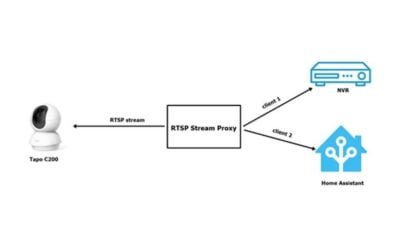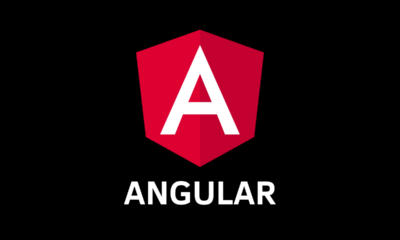Mobile Software
Why am I getting a ‘command not found: py’ error in zsh?

[ad_1]
In this article, we will discuss why you might be encountering the ‘command not found: py’ error in zsh. We will explore common reasons for this error and provide troubleshooting steps to resolve it.
Why is the ‘command not found: py’ error occurring in zsh?
If you are encountering the ‘command not found: py’ error in zsh, it is likely due to the Python executable not being in your system’s PATH. When you attempt to run a Python script or command in the terminal, zsh is unable to locate the Python executable, resulting in the ‘command not found: py’ error message.
Additionally, if you have recently installed or updated Python on your system, the PATH might not have been updated to include the new Python installation. This can also lead to the ‘command not found: py’ error when attempting to run Python-related commands in zsh.
To troubleshoot this issue, you will need to ensure that the Python executable is in your system’s PATH and that it can be accessed by zsh.
How can I fix the ‘command not found: py’ error in zsh?
To resolve the ‘command not found: py’ error in zsh, you can follow these troubleshooting steps:
1. Update your PATH: Check if the directory containing the Python executable is included in your system’s PATH. You can do this by running the following command in the terminal:
echo $PATH
If the directory containing the Python executable is not listed in the output, you will need to update your PATH to include it. You can do this by modifying your shell configuration file (e.g., .zshrc) and adding the directory to the PATH variable. After making the changes, be sure to restart your terminal or run the source command to apply the changes.
2. Verify the Python executable: Double-check the location of the Python executable on your system. The default location for the Python executable is usually /usr/bin/python or /usr/local/bin/python. Ensure that the Python executable is present in the specified location and that it has the necessary permissions to be executed.
Conclusion
The ‘command not found: py’ error in zsh can be frustrating, but it is often caused by a misconfigured PATH or an improperly located Python executable. By following the troubleshooting steps outlined in this article, you can resolve the error and successfully run Python commands in zsh.
FAQs
1. Can I encounter the ‘command not found: py’ error in other shells?
Yes, the ‘command not found: py’ error can occur in other shells, such as Bash or Fish, if the Python executable is not in the system’s PATH. The troubleshooting steps provided in this article can be applied to other shells as well.
2. I have multiple versions of Python installed on my system. Could that be causing the error?
It is possible that having multiple versions of Python installed on your system could lead to the ‘command not found: py’ error, especially if the PATH is not properly configured. Ensure that the correct version of Python is included in the PATH and that it is accessible to the shell.
3. I followed the troubleshooting steps, but I am still encountering the error. What should I do?
If you have followed the troubleshooting steps and are still experiencing the ‘command not found: py’ error, double-check the changes you made to the PATH and verify the location and permissions of the Python executable. If you are still unable to resolve the issue, consider seeking assistance from the community forums or relevant support channels.
[ad_2]
Mobile Software
How can I migrate from react-scripts 4 to 5 in my React app?

[ad_1]
In this article, we will discuss the process of migrating from react-scripts 4 to 5 in a React app. We will cover the steps you need to take to ensure a smooth transition and avoid any potential issues. We’ll also provide some tips and best practices to help make the migration process as seamless as possible.
Why should I migrate from react-scripts 4 to 5?
Migrating from react-scripts 4 to 5 is important as it allows you to take advantage of the latest features, performance improvements, and bug fixes. React-scripts 5 includes updates to Babel, ESLint, and other dependencies, which can improve the overall development experience and the quality of your code.
Additionally, staying on the latest version of react-scripts ensures that your project is using the most secure and supported codebase. Deprecated features and dependencies are often removed in newer versions, so migrating helps to future-proof your application and prevent any potential compatibility issues down the line.
How do I migrate from react-scripts 4 to 5?
To migrate from react-scripts 4 to 5, you will need to update the react-scripts package in your project’s dependencies. First, check your current version by running npm ls react-scripts or yarn list react-scripts. Once you have confirmed the version, you can use the following command to update:
npm install react-scripts@5.0.0
yarn add react-scripts@5.0.0
After updating react-scripts, it’s important to review the release notes and documentation for any breaking changes or migration steps specific to the new version. Make sure to follow any instructions provided to ensure a smooth transition.
What should I do if I encounter issues during the migration?
If you encounter issues during the migration, such as compatibility problems with your existing codebase or dependencies, there are a few steps you can take to troubleshoot and resolve them. First, check the official documentation and community resources for any known issues or workarounds related to the migration.
Additionally, consider reaching out to the open-source community on platforms like Stack Overflow, GitHub, or Reddit. Many developers may have already encountered and resolved similar issues, and can provide valuable insights and assistance. Finally, if you are unable to resolve the issues on your own, don’t hesitate to open a GitHub issue or reach out to the maintainers of the packages causing the problems.
How can I ensure my project is fully compatible with react-scripts 5?
To ensure that your project is fully compatible with react-scripts 5, it’s important to thoroughly test your application after the migration. Run your test suite, perform manual testing, and check for any runtime errors or unexpected behavior in both development and production environments.
You should also review any third-party dependencies and ensure that they are compatible with react-scripts 5. Some packages may have their own specific requirements or migration steps, so make sure to check their documentation for any necessary updates or changes.
Should I automate the migration process?
Automating the migration process can help to streamline and simplify the process, especially for larger or more complex projects. Tools like codemods and update scripts can automate repetitive tasks such as updating import statements, configuration files, and other code changes required for compatibility with react-scripts 5.
However, it’s important to review and test the automated changes to ensure they are applied correctly and do not introduce any new issues. Manual review and validation are still necessary to confirm that the migrated code functions as expected and maintains the same behavior as before the migration.
Conclusion
Migrating from react-scripts 4 to 5 is an important step to ensure that your React app remains up-to-date, secure, and takes advantage of the latest features and improvements. By following the recommended steps and best practices, you can minimize potential issues and make the migration process as smooth as possible.
FAQs
How do I check the current version of react-scripts in my project?
You can check the current version of react-scripts in your project by running npm ls react-scripts or yarn list react-scripts in your terminal. This will display the installed version of react-scripts in your project’s dependencies.
Do I need to update any other dependencies when migrating to react-scripts 5?
While the primary focus of the migration is updating react-scripts to version 5, it’s important to review and update any other dependencies that may have compatibility requirements with the new version. Check the documentation and release notes for any specific instructions related to other dependencies.
What should I do if I encounter a breaking change or deprecation in react-scripts 5?
If you encounter a breaking change or deprecation in react-scripts 5, consult the official documentation and release notes for guidance on how to address the issue. In some cases, there may be migration steps or workarounds provided to help resolve compatibility issues.
Can I revert back to react-scripts 4 if I encounter issues with version 5?
If you encounter issues with react-scripts 5 and need to revert back to version 4, you can uninstall the new version and reinstall the previous version using the following commands:
npm uninstall react-scripts
npm install react-scripts@4.0.0
yarn remove react-scripts
yarn add react-scripts@4.0.0
Are there any tools or resources available to assist with the migration process?
Yes, there are various tools and resources available to assist with the migration process, including codemods, update scripts, and community forums. These can help automate repetitive tasks, troubleshoot issues, and provide valuable insights and assistance from the open-source community.
[ad_2]
Mobile Software
How can I pass data between sibling components in React?

[ad_1]
In this article, we will discuss how to effectively pass data between sibling components in a React application. We will explore different methods and best practices to ensure seamless communication between components, allowing for a more efficient and organized development process.
How to use props to pass data between sibling components?
One of the most common ways to pass data between sibling components in React is by using props. Props allow you to pass data from a parent component to a child component, and can also be utilized to pass data between sibling components. When a parent component renders its child components, it can pass data to them through props, enabling them to access and utilize the passed data.
To pass data between sibling components using props, you can simply define the data in the parent component and then pass it as a prop to each of the sibling components. The sibling components can then access the passed data through their props and manipulate or display it as needed.
How to use state management libraries to pass data between sibling components?
Another effective method for passing data between sibling components in React is by utilizing state management libraries such as Redux or MobX. These libraries provide a centralized state management system that allows components to interact and share data seamlessly.
With state management libraries, you can define a global state that can be accessed and modified by any component within the application, including sibling components. This enables efficient data sharing and ensures that all components are working with the same up-to-date data, eliminating the need for complex data passing logic between sibling components.
How to use context API to pass data between sibling components?
The context API in React provides a way to pass data through the component tree without having to pass props down manually at every level. This can be particularly useful for passing data between sibling components that are nested within the same parent component.
By creating a context and providing it at the top of the component hierarchy, you can then access the provided data in any of the child components, including sibling components. This allows for a more streamlined approach to data passing, as the data can be accessed directly from the context without the need for prop drilling.
How to use event emitters to pass data between sibling components?
Event emitters provide a way for components to communicate and pass data between each other by emitting and listening for events. This can be a useful approach for passing data between sibling components that are not directly related in the component hierarchy.
By creating custom event emitters within the components, you can emit events containing the data that needs to be passed, and then listen for these events in the sibling components to retrieve and utilize the data. This can be particularly effective for passing data between sibling components that are on different levels of the component hierarchy or located in different parts of the application.
Conclusion
Passing data between sibling components in a React application is an essential aspect of building a well-structured and efficient front-end. By utilizing methods such as props, state management libraries, context API, and event emitters, you can ensure seamless communication and data sharing between sibling components, leading to a more organized and maintainable codebase.
FAQs
1. Can I pass data between sibling components using only props?
Yes, you can pass data between sibling components using only props. By defining and passing data as props from a parent component to its child components, you can enable data sharing between sibling components without the need for additional state management solutions.
2. Do I need to use a state management library to pass data between sibling components?
While not necessary, utilizing a state management library such as Redux or MobX can provide a more centralized and efficient way to pass data between sibling components in a React application. This can be particularly useful for larger applications with complex data sharing requirements.
3. Can I pass data between sibling components using the context API?
Yes, the context API in React provides a straightforward way to pass data between sibling components that are nested within the same parent component, without the need for prop drilling. By creating a context and providing it at the top of the component hierarchy, you can access the provided data in any of the child components, including sibling components.
4. How do event emitters help in passing data between sibling components?
Event emitters enable components to communicate and pass data between each other by emitting and listening for events. This can be a useful approach for passing data between sibling components that are not directly related in the component hierarchy, as it provides a way for components to share data and trigger actions based on events.
5. What is the best approach for passing data between sibling components in React?
The best approach for passing data between sibling components in React largely depends on the specific requirements and structure of your application. While props, state management libraries, context API, and event emitters are all viable methods, the most suitable approach will vary based on the complexity and scope of your project.
[ad_2]
Mobile Software
Jest toBe vs toEqual: Understanding the Differences

[ad_1]
In this article, we will discuss the differences between Jest’s toBe and toEqual methods. We will explore how these two methods can be used in testing and understand their unique functionalities to help you write more effective and accurate test cases for your software.
What Is Jest’s toBe Method?
The toBe method in Jest is used for comparing the equality of two values. It checks if both values are exactly the same and of the same data type. When using toBe, Jest checks for strict equality, meaning it compares the references of objects and the values of primitives. For example, if you have two variables with the same value but different references in memory, toBe would return false.
When using toBe, it’s important to remember that it’s not the same as the equality operator (===) in JavaScript. The toBe method uses Object.is to compare values, which means it considers -0 and +0 as different and compares NaN values as equal.
What Is Jest’s toEqual Method?
The toEqual method in Jest is also used for comparing the equality of two values. However, unlike toBe, toEqual performs a deep comparison of objects and arrays. This means that it checks the equality of each property or element within the objects or arrays, rather than just comparing references or values. For example, if you have two objects with the same properties and values, but different references, toEqual would return true.
When using toEqual, Jest traverses the entire object or array to compare each property or element, ensuring that the contents are the same. This makes toEqual particularly useful for testing complex data structures and ensuring their equality in an accurate and reliable way.
When Should I Use toBe?
You should use the toBe method when you want to compare strict equality between values, such as checking if two variables reference the same object or if two variables have the same primitive value and type. It’s useful for simple comparisons and checking strict equality without performing a deep comparison of complex data structures. For example, when testing simple values like strings, numbers, or booleans, toBe is a good choice.
When Should I Use toEqual?
You should use the toEqual method when you want to perform a deep comparison of complex data structures, such as objects or arrays. Since toEqual performs a thorough check of each property or element within the objects or arrays, it’s ideal for testing the equality of complex data structures and ensuring that all the contents match exactly. Use toEqual when you want to compare the contents of objects or arrays, rather than just their references or values.
Conclusion
In conclusion, understanding the differences between Jest’s toBe and toEqual methods is crucial for writing effective and accurate test cases for your software. While toBe checks for strict equality of values, toEqual performs a deep comparison of complex data structures. By leveraging these two methods appropriately, you can ensure that your tests accurately validate the behavior and functionality of your code.
FAQs
1. Can I use toBe and toEqual interchangeably?
No, you should not use toBe and toEqual interchangeably. They serve different purposes in testing, with toBe for strict equality and toEqual for deep comparison of complex data structures.
2. What happens if I use toBe on complex data structures?
If you use toBe on complex data structures such as objects or arrays, it will not perform a deep comparison and may not accurately validate their equality. It’s better to use toEqual in such cases.
3. Can I use toBe for comparing primitive values?
Yes, toBe is suitable for comparing primitive values such as strings, numbers, and booleans. It checks for strict equality and ensures that the values and types match exactly.
4. When should I prioritize using toEqual over toBe?
You should prioritize using toEqual over toBe when testing complex data structures such as objects or arrays. Since toEqual performs a deep comparison, it’s more suitable for validating the equality of their contents.
5. Are there any other methods in Jest for value comparison?
Yes, Jest provides additional methods for value comparison, such as toStrictEqual and toContain. These methods offer more specialized functionalities for specific testing scenarios, so be sure to explore them based on your testing needs.
[ad_2]
-

 Programming9 months ago
Programming9 months agoArgo CD vs Jenkins: Which is the Better Continuous Deployment Tool?
-

 Desktop Software9 months ago
Desktop Software9 months agoHow can I convert RTSP streaming to HTTP Live Streaming (HLS)?
-

 Programming9 months ago
Programming9 months agoHow to generate insert statements in DBeaver?
-

 Desktop Software9 months ago
Desktop Software9 months agoHow can I trigger a GitHub action via API?
-

 Web Development9 months ago
Web Development9 months agoHow can I make text not selectable in CSS?
-

 Mobile Software9 months ago
Mobile Software9 months agoHow can I migrate from react-scripts 4 to 5 in my React app?
-

 Desktop Software10 months ago
Desktop Software10 months agoWhich import alias would you like to have configured in Next.js?
-

 Programming9 months ago
Programming9 months agoWhat should I do if ‘router-outlet’ is not a known element in Angular?
















